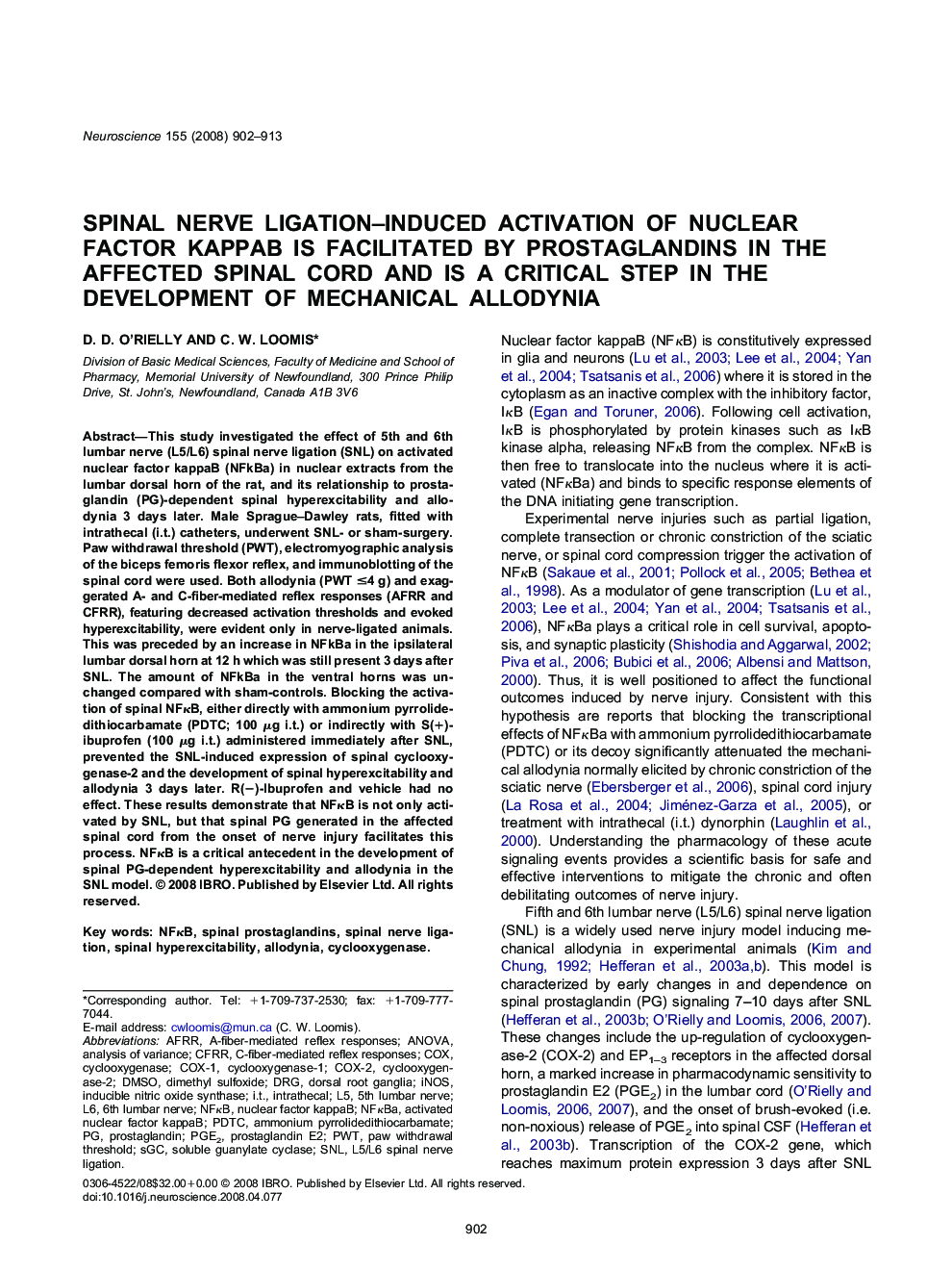| Article ID | Journal | Published Year | Pages | File Type |
|---|---|---|---|---|
| 4340740 | Neuroscience | 2008 | 12 Pages |
Abstract
This study investigated the effect of 5th and 6th lumbar nerve (L5/L6) spinal nerve ligation (SNL) on activated nuclear factor kappaB (NFkBa) in nuclear extracts from the lumbar dorsal horn of the rat, and its relationship to prostaglandin (PG)-dependent spinal hyperexcitability and allodynia 3 days later. Male Sprague-Dawley rats, fitted with intrathecal (i.t.) catheters, underwent SNL- or sham-surgery. Paw withdrawal threshold (PWT), electromyographic analysis of the biceps femoris flexor reflex, and immunoblotting of the spinal cord were used. Both allodynia (PWT â¤4 g) and exaggerated A- and C-fiber-mediated reflex responses (AFRR and CFRR), featuring decreased activation thresholds and evoked hyperexcitability, were evident only in nerve-ligated animals. This was preceded by an increase in NFkBa in the ipsilateral lumbar dorsal horn at 12 h which was still present 3 days after SNL. The amount of NFkBa in the ventral horns was unchanged compared with sham-controls. Blocking the activation of spinal NFκB, either directly with ammonium pyrrolidedithiocarbamate (PDTC; 100 μg i.t.) or indirectly with S(+)-ibuprofen (100 μg i.t.) administered immediately after SNL, prevented the SNL-induced expression of spinal cyclooxygenase-2 and the development of spinal hyperexcitability and allodynia 3 days later. R(â)-Ibuprofen and vehicle had no effect. These results demonstrate that NFκB is not only activated by SNL, but that spinal PG generated in the affected spinal cord from the onset of nerve injury facilitates this process. NFκB is a critical antecedent in the development of spinal PG-dependent hyperexcitability and allodynia in the SNL model.
Keywords
PGE2PDTCSGCPWTSNLiNOSCOX-1COX-2COXDRGDMSONFκBpaw withdrawal thresholdAllodyniacyclooxygenasei.t.intrathecalanalysis of varianceANOVADimethyl sulfoxideinducible nitric oxide synthaseSoluble guanylate cyclasecyclooxygenase-1Cyclooxygenase-2nuclear factor kappaBProstaglandin E2prostaglandinspinal nerve ligationdorsal root ganglia
Related Topics
Life Sciences
Neuroscience
Neuroscience (General)
Authors
D.D. O'Rielly, C.W. Loomis,
